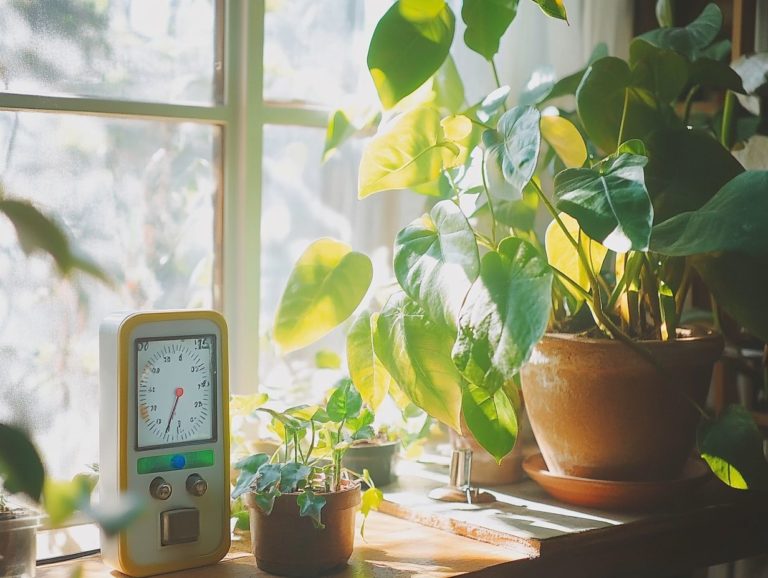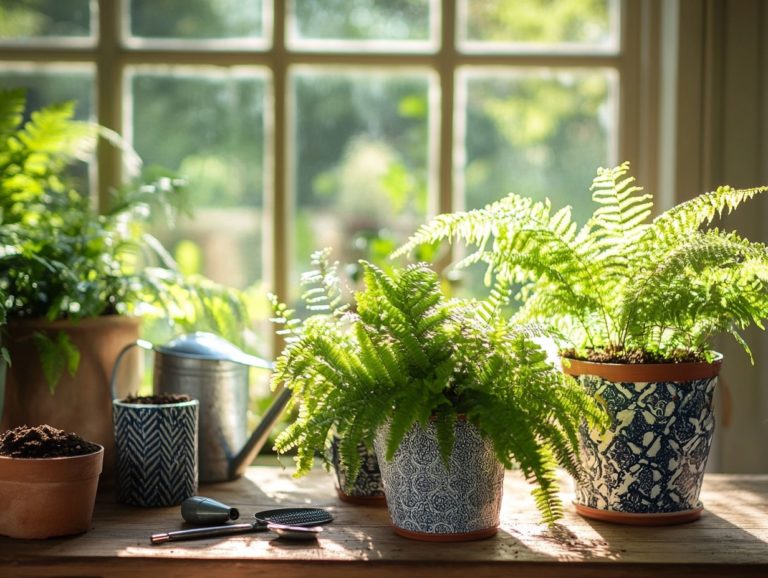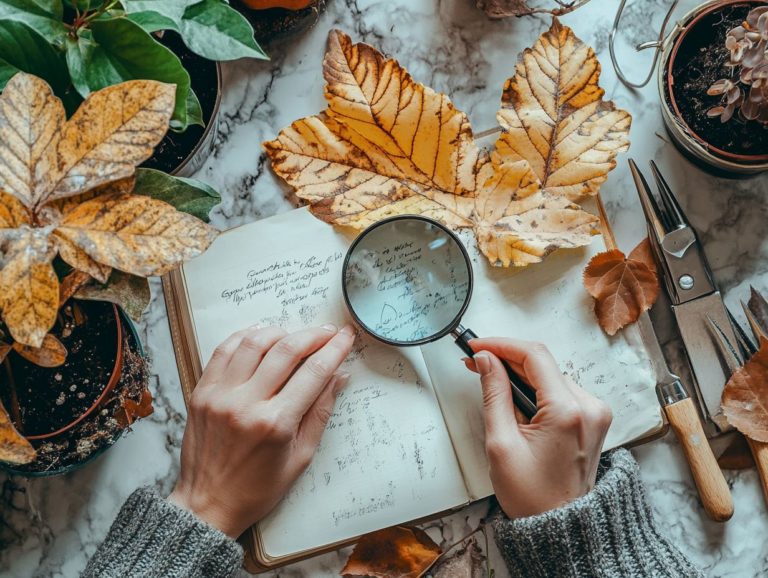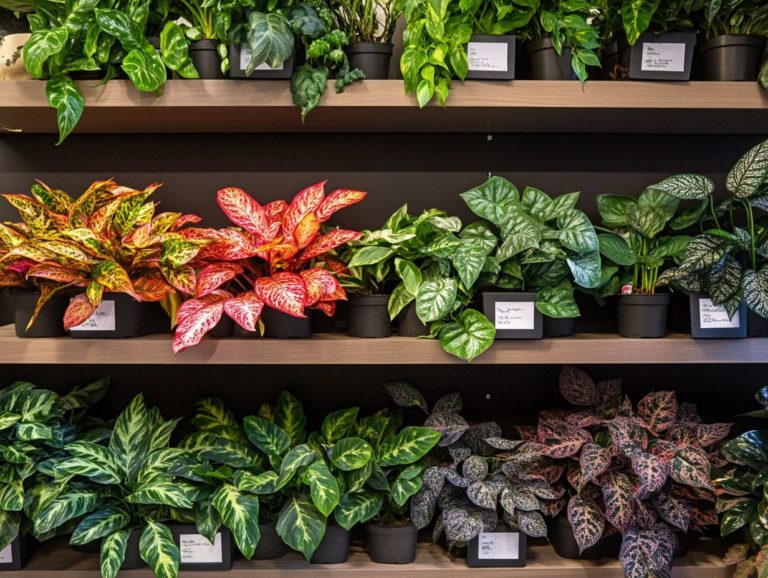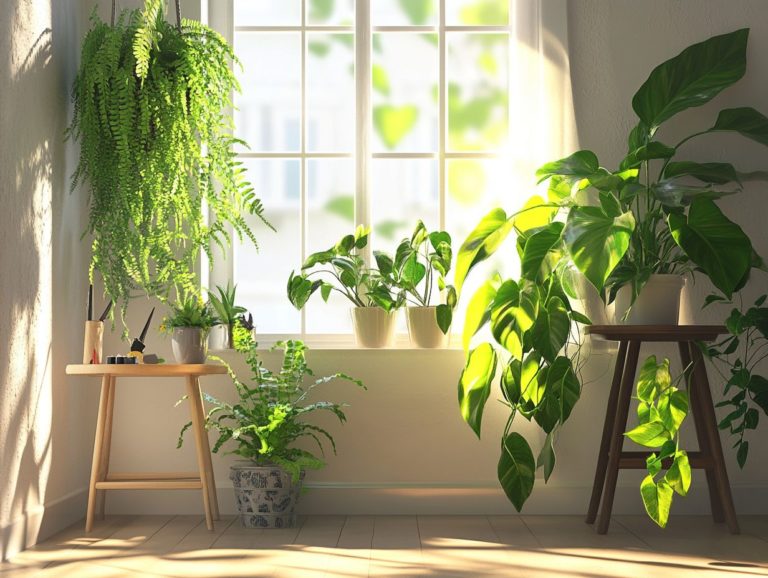How to Care for Rare Indoor Plant Species?
Rare indoor plants can infuse your home with a distinctive allure. They showcase unique varieties that elevate indoor greenery but require specialized care to thrive.
Understand what elevates a plant to the status of “rare,” and learn how to create the ideal light, temperature, and watering environment.
Delve into the world of common pests and diseases, discover how to grow new plants, and uncover where to source these unique house plants.
Get insights to avoid common pitfalls in caring for your rare plants, ensuring they not only survive but flourish beautifully within your space.
Contents
- Key Takeaways:
- Caring for Rare Indoor Plants
- Propagating Rare Indoor Plants
- Where to Find Rare Indoor Plants
- Tips for Successfully Growing Rare Indoor Plants
- Frequently Asked Questions
- What is the best way to provide light for rare indoor plant species?
- How can I prevent pests from infesting my rare indoor plant species?
- What should I do if my rare indoor plant species is showing signs of distress?
Key Takeaways:
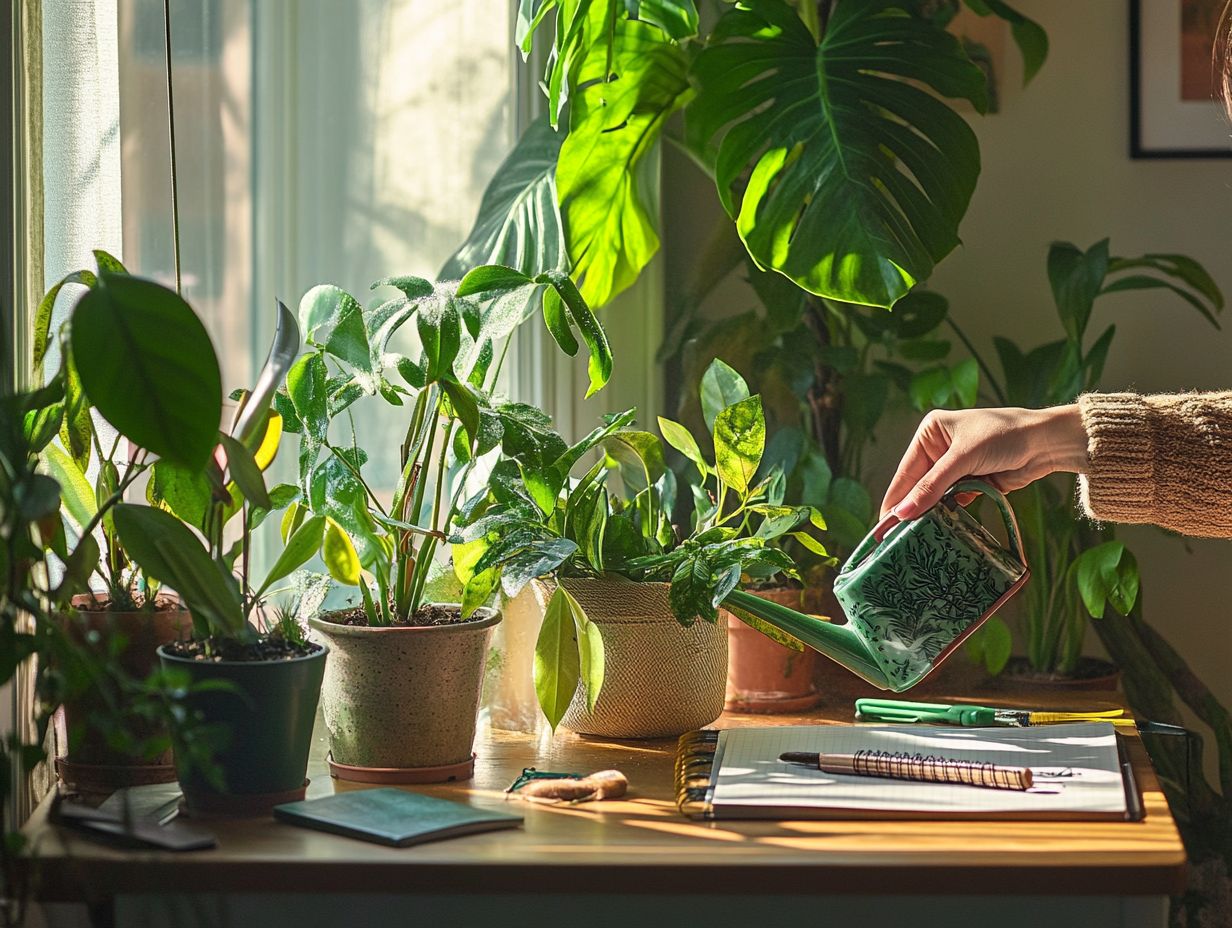
- Understand the unique needs of rare indoor plants, including light, temperature, watering, and fertilization.
- Learn how to propagate rare indoor plants through methods such as division, cuttings, and seed germination.
- Find rare indoor plants through a variety of sources, including online websites and local plant nurseries.
What Makes a Plant Rare?
Rare plants are defined by their unique beauty, extraordinary characteristics, and limited availability. This includes rare variegated plants and rare tropical plants, making them highly coveted by plant enthusiasts and collectors.
Their rarity stems from factors such as distinctive growth habits, specific environmental needs, and geographical distribution.
Consider the Philodendron Pink Princess and Monstera Thai Constellation; these rare houseplants have captivated indoor gardening aficionados. The Sansevieria kirkii and Bromeliad Neoregelia flaunt exotic traits that truly set them apart, alongside the Japanese Birds Nest Fern and String of Pearls.
These plants often require specific conditions to thrive, such as high humidity and bright, indirect light, which can pose challenges in typical indoor environments, especially for rare tropical plants.
For example, the Philodendron Pink Princess stands out with its striking pink variegation. This not only makes it visually stunning but also demands careful light management to preserve those vibrant hues, especially under bright indirect light.
On the other hand, the Monstera Thai Constellation is celebrated for its creamy white marbling, a feature that shines under optimal growing conditions.
As their geographical distribution becomes increasingly restricted, their limited availability only boosts demand, turning these botanical treasures into symbols of prestige and passion among collectors.
Caring for Rare Indoor Plants
Caring for rare indoor plants demands a refined understanding of their specific needs to ensure they truly thrive. This includes rare snake plants and exotic indoor plants, allowing their stunning leaves and captivating forms to shine.
Unlike their low-maintenance counterparts, many rare houseplants require your dedicated attention to their environment. Pay close attention to light, temperature, and humidity levels to flourish and preserve their distinctive beauty. For tips on maintaining their health and enhancing your space, check out indoor plant care for beautiful displays.
Light and Temperature Requirements
Understanding the light and temperature requirements is essential for the successful growth of rare tropical plants and their distinct habits. Many rare houseplants, like the Swiss Cheese Monstera and Philodendron Burle Marx, thrive in bright, indirect light. Others, such as Monstera Albo and Philodendron Prince of Orange, demand more specific conditions to flourish.
Take the Alocasia zebrina, for example; its striking patterned stems require high humidity to keep those leaves from drooping, and it also favors bright, diffused sunlight for robust growth, ideal for unique growth habits.
If the vibrant colors of the Calathea ornata are subjected to lower light levels, they can quickly lose their luster. Grasping these nuances can make a world of difference in their health.
By maintaining a humid environment perhaps using pebble trays or regular misting you can help these enchanting plants thrive, showcasing their unique foliage and vibrant colors in all their glory.
Start your journey with rare indoor plants today and watch your home come alive!
Watering and Fertilization

Watering and fertilization are pivotal in your care for rare tropical plants. They can dramatically influence their health and growth. Each unique plant has its own watering needs, making it essential to understand these requirements. This knowledge helps you sidestep the challenging cultivation hurdles that can emerge from overwatering.
Take the variegated Monstera and rare philodendron varieties, as well as beautiful rare succulents. They flourish in consistently moist yet not soggy soil, necessitating a careful balance that many novice growers find tricky to achieve. For optimal care, exploring watering techniques for different indoor species is beneficial. Conversely, the delicate nature of rare Hoya species, including Hoya Carnosa, underscores the importance of allowing the soil to dry out between waterings. These plants are vulnerable to root rot, a condition where plant roots decay due to excess moisture, if left in overly wet conditions.
Proper fertilization schedules are also crucial. For instance, beautiful Albuca spiralis and Pineapple Plant thrive with light, balanced fertilizers during their active growth periods, ensuring they have access to the nutrients essential for robust development.
By mastering the unique watering and fertilization preferences of these remarkable species, you can cultivate a thriving indoor garden that highlights the beauty of your rare plants.
Common Pests and Diseases
Common pests and diseases can pose significant threats to your rare house plants, including beautiful Philodendron Pink Princess. These issues can jeopardize their unique beauty and make them more vulnerable in a competitive market. Grasping these challenges is key. Take the renowned Monstera adansonii, for example. Its striking perforated leaves make it highly sought after, yet it can quickly fall victim to spider mites and root rot, both of which can diminish its allure, especially in rare tropical plants. Similarly, variegated forms of popular Philodendron species are notorious for attracting aphids. These pests not only sap essential nutrients but can also lead to secondary infections that could compromise your plant’s health.
Preventive measures, such as maintaining proper humidity levels and ensuring good air circulation, are crucial for keeping your plants thriving. Don t wait take preventive measures now to safeguard your plants! When issues do arise, employing treatment strategies like insecticidal soaps for pests or closely monitoring your watering practices for root health can truly make a difference, helping you preserve the integrity of these rare beauties.
Propagating Rare Indoor Plants
Propagating rare indoor plants, such as unique succulent varieties like String of Pearls, can be an immensely rewarding endeavor. However, it needs careful handling and attention.
The methods for successful reproduction can differ dramatically across species. This necessitates a deep understanding of their specific growth habits and environmental requirements.
Methods for Reproduction
You have several effective methods at your disposal for reproducing rare tropical plants, each tailored to the unique needs of different house plants. Techniques such as cuttings, division, and offsets small plants that grow from the base of the parent plant are your go-to strategies for expanding your indoor greenery collection.
Among these methods, stem cuttings are particularly favored for species like the Monstera deliciosa. This delightful plant thrives when propagated this way, thanks to its robust growth. Leaf propagation is another valuable technique, especially for succulent varieties like Echeveria, which are known for their resilience and low maintenance.
For sturdier plants such as Sansevieria, division is an excellent approach. This method ensures that each new plant retains its genetic vigor, essential for healthy growth. By understanding the preferred propagation method for each rare plant, you can significantly increase your success rate and cultivate a thriving indoor garden.
Where to Find Rare Indoor Plants
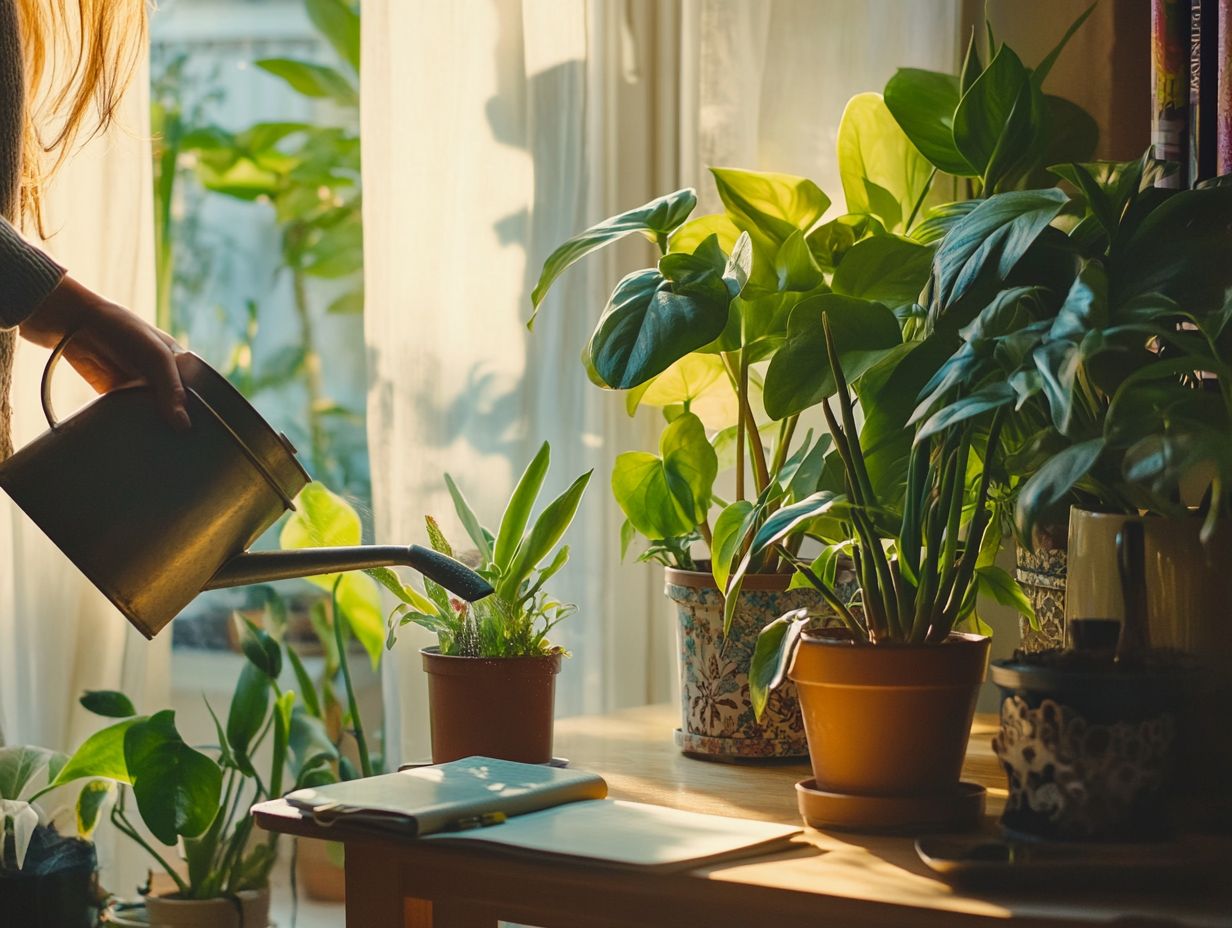
Finding rare indoor plants is like a treasure hunt. They can be hard to find!
To truly enhance your collection, it’s essential to know where to seek out these unique specimens.
Online and Local Sources
Online sources have surged in popularity for acquiring rare house plants. They present an expansive array of exotic indoor plants that may not be available locally.
Local nurseries can surprise you with unique options, sometimes showcasing rare finds that are difficult to source elsewhere. Each option has its distinct advantages and disadvantages.
Purchasing online may grant access to a broader selection of exotic indoor plants, but it poses challenges such as shipping conditions and the risk of your plants arriving in less-than-ideal shape.
Conversely, local nurseries let you inspect your potential new green friends before buying, ensuring their quality and health. However, their selection might be somewhat limited.
To navigate these choices wisely, research online sellers and read their reviews. Confirm they have a solid reputation for providing healthy plants.
Check for guarantees or return policies. When visiting local stores, don t hesitate to ask the staff where they get their plants; you never know when a hidden gem might come to light.
Tips for Successfully Growing Rare Indoor Plants
To nurture rare indoor plants, you need specific strategies. Be aware of their delicate needs!
Without proper attention to their individual requirements, you may face common pitfalls that could impede their growth and overall health.
Mistakes to Avoid
Avoiding common mistakes is essential for maintaining the health and longevity of your rare house plants. They often require special consideration due to their unique growth habits.
Neglecting specific care guidelines can lead to detrimental outcomes for these stunning specimens.
To truly flourish, understand the environmental and nutritional needs tailored to each species. Many enthusiasts mistakenly overwater or underwater these delicate plants, resulting in root rot or stunted growth.
By checking soil moisture and adjusting watering frequency based on each plant’s requirements, you can significantly enhance their vitality.
Inadequate lighting is another frequent oversight. Ensuring that your plants receive the right light intensity and duration can elevate their growth and vibrant colors.
By educating yourself about these essential care factors, you can cultivate a thriving collection of rare plants that bring beauty and joy to any space.
Frequently Asked Questions
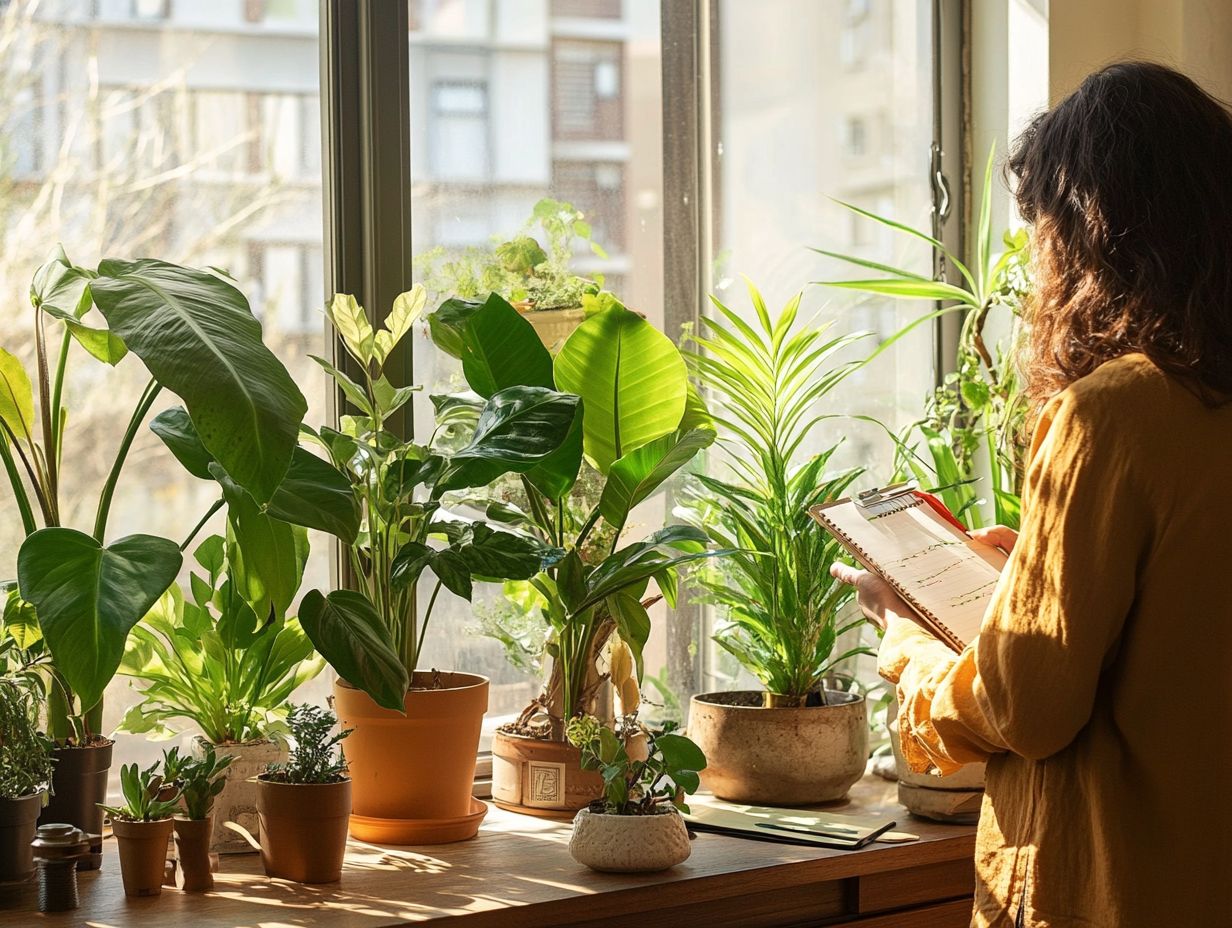
What steps should I take to care for a rare indoor plant species?
Start by researching the plant’s specific needs. Check its light, water, and soil requirements.
Provide the plant with the appropriate environment, like a well-lit area and well-draining soil. Regularly monitor for any signs of disease or pests, and address issues promptly.
How often should I water a rare indoor plant species?
The watering frequency will vary depending on the plant’s specific needs and environment. Some might need more frequent watering, while others may only require it once a week.
Always check the soil moisture level before watering and adjust accordingly.
Can rare indoor plant species be propagated?
Yes, most rare indoor plant species can be propagated through methods like stem cutting, division, or leaf cuttings.
Research the specific propagation techniques for the particular plant species and follow them carefully for success.
What is the best way to provide light for rare indoor plant species?
To provide light for rare indoor plants, copy their natural environment. Some plants need direct sunlight, while others prefer indirect or low light.
Research the specific light requirements of your plant and position it accordingly.
How can I prevent pests from infesting my rare indoor plant species?
Regularly check your plant for any signs of pests. Practice good plant hygiene by removing dead leaves and debris.
Wipe down the leaves regularly. If you spot pests, use a natural pest control method, such as those made from natural ingredients, to treat the plant.
What should I do if my rare indoor plant species is showing signs of distress?
If your plant is wilting, has yellowing leaves, or is growing slowly, act fast to identify the cause and fix it! Check for issues with lighting, watering, or pests.
Research your plant’s specific needs and make any necessary adjustments to help it thrive.

